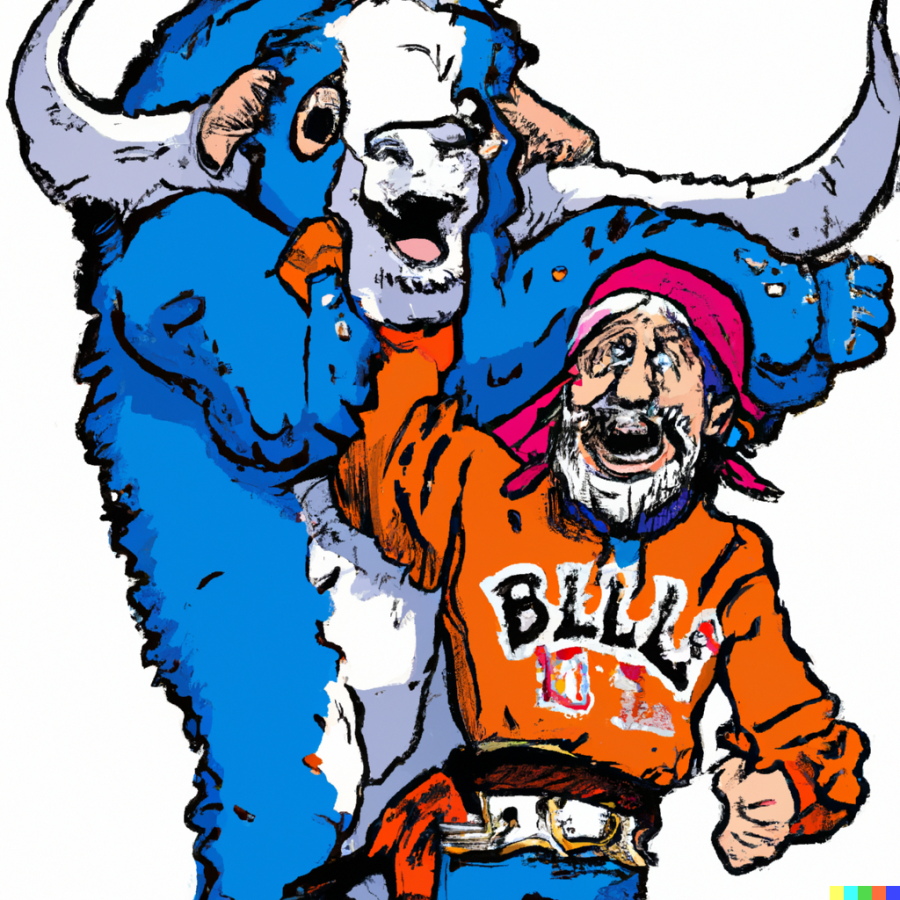Dwelling in the past
Although sometimes a name is just a name, perhaps it is important to acknowledge where it comes from and what it’s true meaning is.
Most people in America either support or watch the sport of football. The National Football League (NFL) was founded in 1920 by American Professional Football Conference representatives who wanted to improve the sport. Like any of the other popular sports across the world, American football has developed to fit into our modern lives.
Although the NFL has progressed and improved throughout the 103 years that it has been in existence, the NFL in some cases has dwelled in the past. One of these cases is The team named after the famous showman and successful frontiersman William Cody, also known as Buffalo Bill.
William F. Cody was born in 1846 in Iowa and raised in Kansas during the “Stake Your Claim” period in American 19th-century history, serving in the American Civil War and later serving as a civilian scout. During this time, Buffalo Bill scalped Yellow Hand, a Native American. The scalp was kept in his possession until his family donated it to a museum in the town named after him in Wyoming.
Another grievance that Buffalo Bill committed would be his self-proclaimed slaughter of 4,282 bison in the span of 18 months. Unfortunately, this means he contributed not only to the genocide of Native Americans by force but also indirectly killed them off by hunting their food source to such a massive number.
Buffalo Bill successfully made around $1.4 million from his Wild West show (equivalent to around $50 million today), twice Zac Efron’s net worth. “The Wild West Show” was popular worldwide due to its multiple tours in Europe and America during the late 19th century and early 20th century.
However, the show spread misinformation wherever it went due to Buffalo Bill’s romanticization of true events on the western front. Buffalo Bill was even known to make up fake stories about his life in order to portray himself in an epic light to the crowds, because of this many historians still argue on what pieces of his life are actually true.
In one of his shows, Buffalo Bill reenacts his scalping of the Native American Yellow Hand. This is but one detrimental act to the image of Native Americans. By accrediting them as savages, the U.S. government could continue to prevent Natives from having fundamental rights and fair treatment.
This is due to the media’s influence over Americans at the time persuading those who were not originally convinced Natives were as abhorrent as the stories told. However, it is definite that the vast majority of Americans at the time were already convinced of this set of false beliefs before media with similar propagation as the “Wild West Show” came into the picture.
Buffalo Bill’s character has either been a starting role or a main role in over 23 films. In literature, Buffalo Bill has had over 600 dime novels written about him. Buffalo Bill helped pioneer the misrepresentation of Native Americans through both his show and his legacy, by doing so Americans have further produced ethnocentric media.
America has a long history of misrepresenting Native American culture in popular media. Misrepresentation of Native American culture can be found in modern American comedies, such as Family Guy or The Ridiculous Six. Finding any ethnocentric views in modern media substantiates how Buffalo Bill and other Americans gave off a negative impact on the depiction of Native American culture, strong enough to survive through America’s culturally progressive nature throughout the times of immense change.
Ironically for a team named after such a person, the Bills have been committed to giving back to their local community, and their official website is filled with community outreach programs.
Yet, why should the Buffalo Bills team continue to use a name that honors a man who participated in the obliteration of Native Americans, when they show compassion for the people in their communities? Although sometimes a name is just a name, perhaps it is important to acknowledge where it comes from and what it’s true meaning is.


